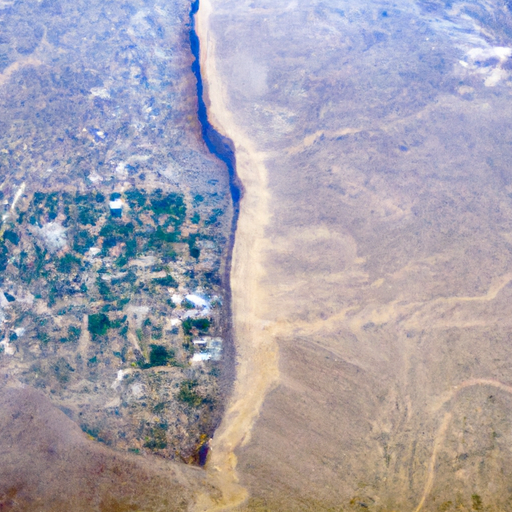Introduction
The San Andreas Fault, a major geological fault line in California, has long been a source of concern for scientists and residents alike. Stretching approximately 800 miles, this fault separates the Pacific Plate from the North American Plate, making it a hotspot for seismic activity. The question on everyone’s mind is: what will happen if the San Andreas Fault breaks? In this article, we will delve into the catastrophic consequences that could unfold if this event were to occur.
The Potential Earthquake
One of the most immediate and devastating consequences of the San Andreas Fault breaking would be a massive earthquake. The fault is known for its ability to generate powerful seismic events, and a rupture along its length could result in a magnitude 8 or even higher earthquake. The shaking would be felt across a wide area, impacting densely populated cities such as Los Angeles, San Francisco, and San Diego.
Structural Damage
The sheer force of a major earthquake along the San Andreas Fault would cause extensive structural damage to buildings, bridges, and infrastructure. Older structures that were not designed to withstand such intense shaking would be particularly vulnerable, leading to collapses and widespread destruction. This would not only result in significant economic losses but also pose a grave threat to human life.
Landslides and Ground Deformation
The rupture of the San Andreas Fault could trigger massive landslides in the surrounding areas. The intense shaking would destabilize slopes, causing rocks and debris to slide down mountainsides, potentially burying communities in their path. Additionally, the fault movement could lead to ground deformation, causing the land to shift and crack. This would further exacerbate the destruction and make it challenging for rescue and recovery efforts.
Tsunamis
If the San Andreas Fault were to break near the coast, it could trigger tsunamis. The sudden displacement of the seafloor during an earthquake could generate powerful ocean waves that would travel towards the shoreline. Coastal communities would be at risk of being inundated by these tsunamis, causing widespread flooding and destruction along the coast.
Disruption of Utilities
A major earthquake along the San Andreas Fault would likely result in the disruption of essential utilities such as water, electricity, and gas. Pipelines and power lines could be damaged or severed, leading to widespread outages and leaving communities without basic necessities. Restoring these services would be a massive undertaking, further prolonging the recovery process.
Conclusion
The consequences of the San Andreas Fault breaking would be catastrophic. From a devastating earthquake to landslides, tsunamis, and the disruption of utilities, the impact on human life, infrastructure, and the economy would be immense. While scientists continue to monitor and study this fault, it is crucial for residents in earthquake-prone areas to be prepared and have emergency plans in place. Understanding the potential consequences can help us better mitigate the risks and ensure the safety and well-being of our communities.




